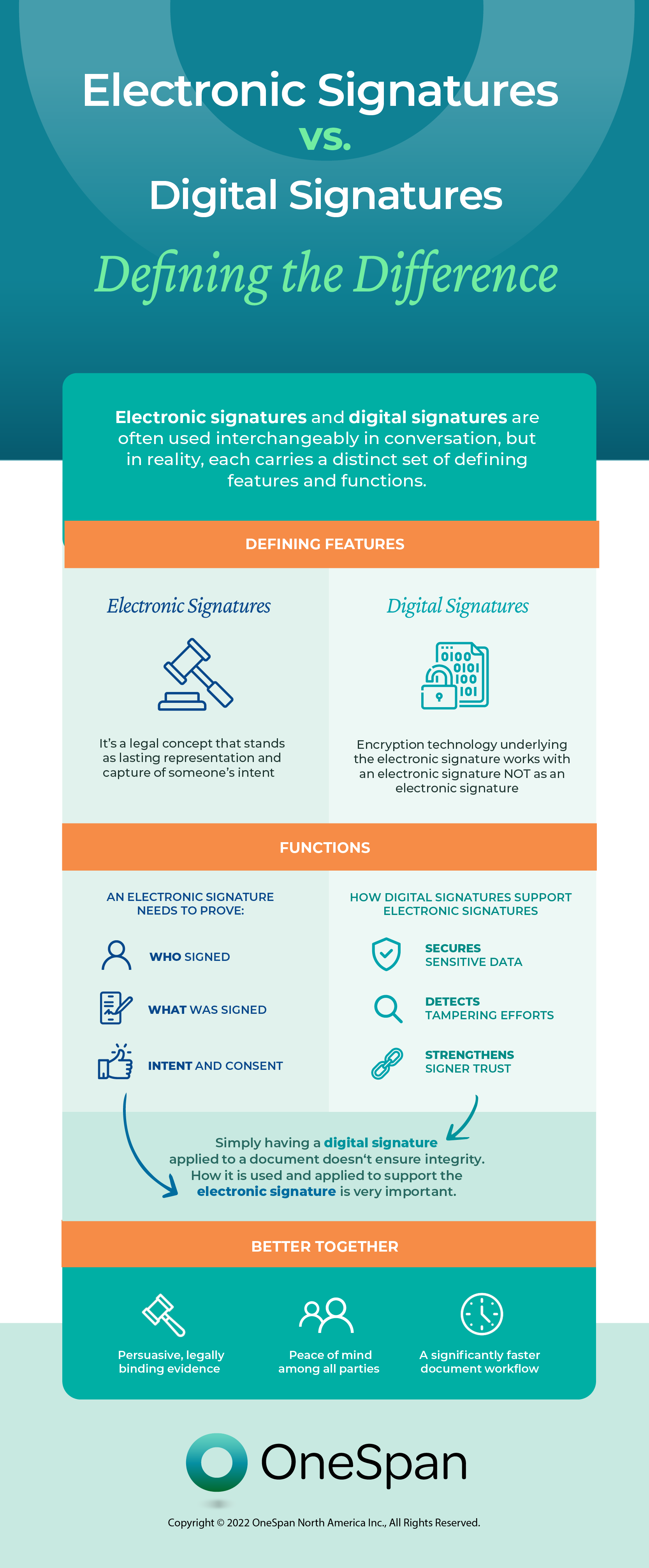
Content from Infographic
Electronic Signatures vs. Digital Signatures Defining the Difference
Electronic signatures and digital signatures are often used interchangeably in conversation, but in reality, each carries a distinct set of defining features and functions.
DEFINING FEATURES
It’s a legal concept that stands as lasting representation and capture of someone’s intent
Encryption technology underlying the electronic signature works with an electronic signature NOT as an electronic signature
FUCTIONS
AN ELECTRONIC SIGNATURE NEEDS TO PROVE:
WHO signed
WHAT was signed
INTENT and Consent
HOW DIGITAL SIGNATURES SUPPORT ELECTRONIC SIGNATURES
SECURES SENSITIVE DATA associated with documents through encryption
DETECTS TAMPERING EFFORTS and invalidates signed documents if they have been altered in any way
STRENGTHENS signer trust
Simply having a digital signature applied to a document doesn‘t ensure integrity. How it is used and applied to support the electronic signature
is very important.
BETTER TOGETHER
Pairing the two together ultimately produces
- Persuasive, legally binding evidence
- Peace of mind among all parties
- A significantly faster document workflow
To learn more, see the electronic signatures vs. digital signatures blog.